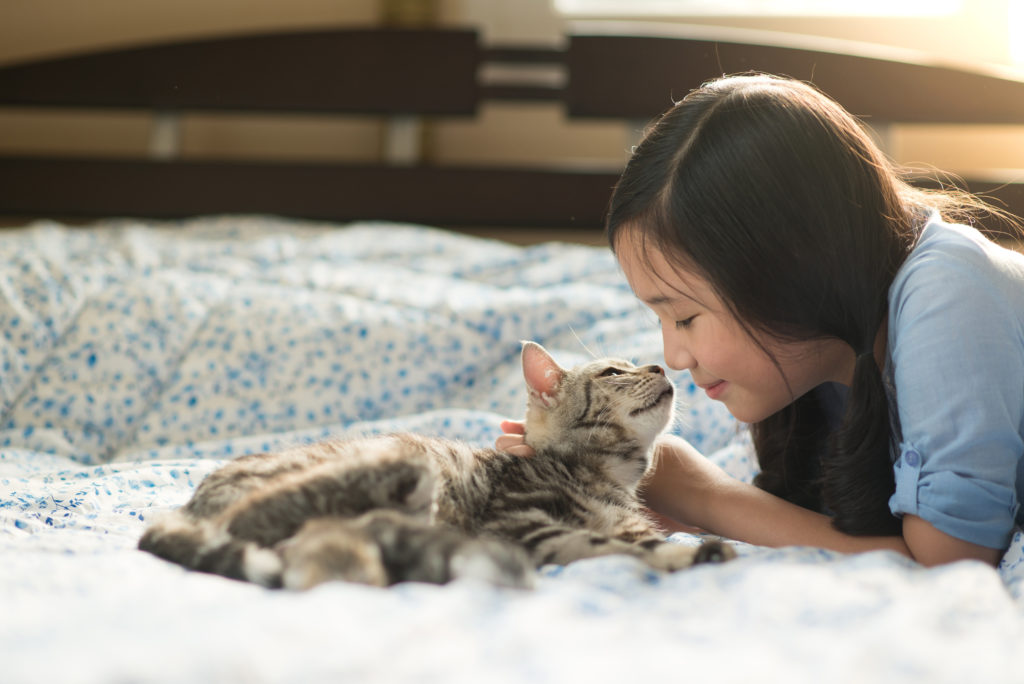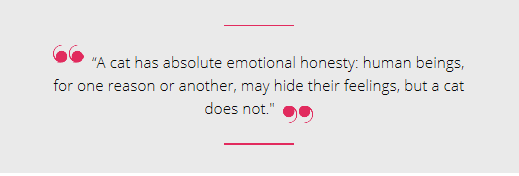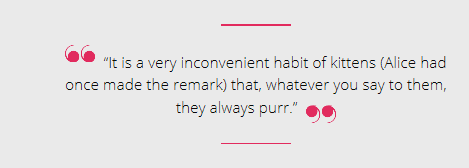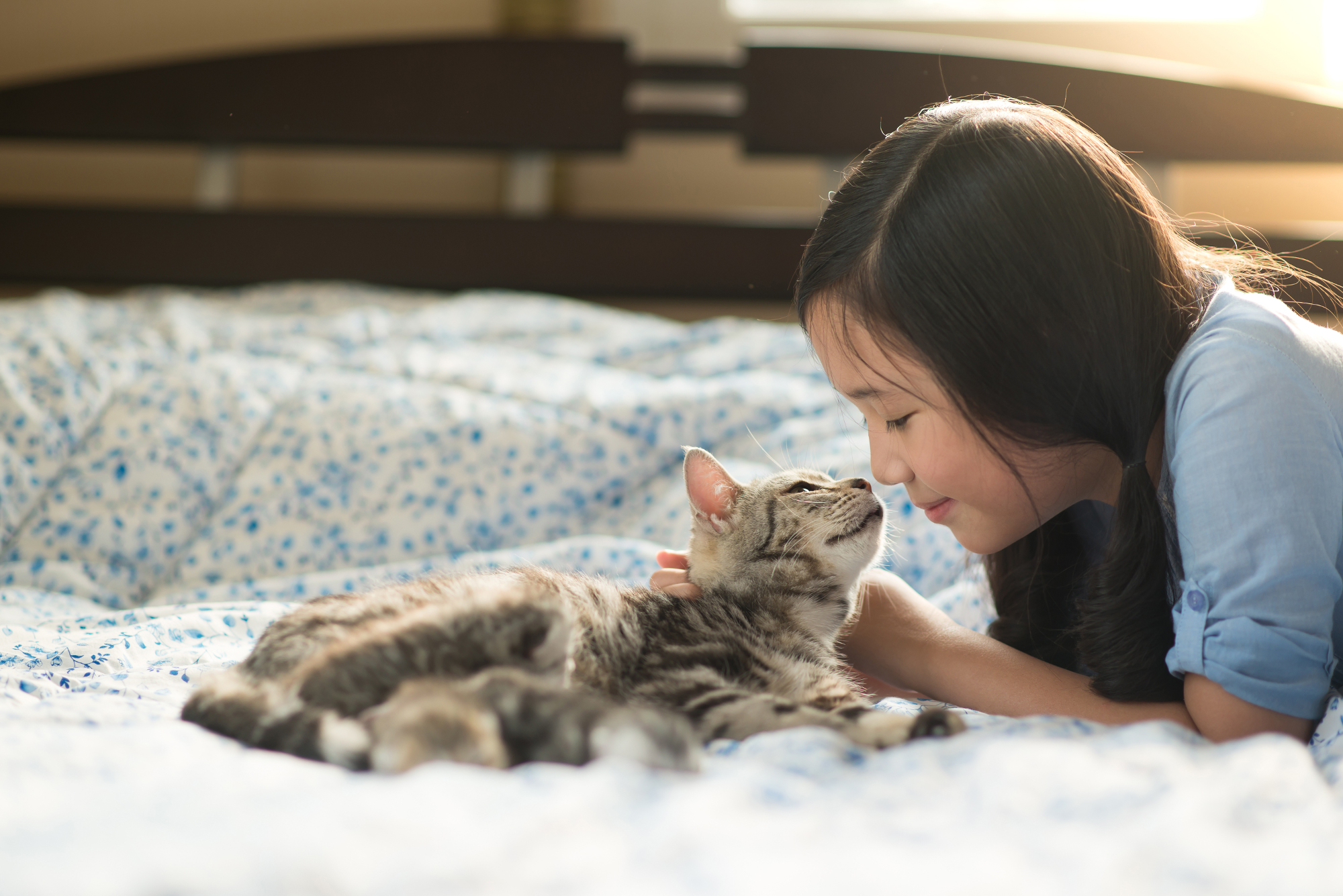Why Cats Purr
What could be more soothing, than the sleek, flowing form of a resting cat, curled in your lap purring gently? The therapeutic value is through the roof.
But why – and how – does your feline friend make the lovely sound?
It’s easy to assume that a cat purring is simply a sign that it’s content. It’s a cat’s way of smiling, right? You could be excused for believing a cat purring is the same as a dog wagging its tail.
It’s a little more complex than that. Have you noticed that cats and kittens sometimes make a similar sound when upset or frightened? It could even be a way that cats express pain or discomfort.
Let’s look at the basics of what cat purring is all about. It could provide valuable insights if you ever asked: “what is my cat trying to say?”
How do cats purr?
Starting then with the mechanics of the process. Did you ever wonder where does a cat’s purr come from?
You may be surprised to learn that they have no special physical apparatus to make the purring sound. It’s simply the process of air passing over the cat’s throat muscles. A cat’s purr comes from rapid movement in its larynx (voice box). This, combined with movement in its diaphragm which lies beneath its lungs, produces that characteristic purr in cats.
What does it mean when cats purr?
Basically, a cat’s purr is a self-soothing mechanism, a response to what it’s feeling and what it needs.
Why do kittens purr? Even very young kittens purr, to comfort themselves or to draw their mother’s attention to the fact they are hungry.
This range of “messages” from a cat’s purr is why the tone and volume changes. Some cat purrs can be high pitched, others are rumbling sounds. You may even catch a cat’s purr that’s just a whisper.
Having a close bond with your pet often means becoming well-tuned to its needs and desires. You will start to discern a pattern in your cat’s purring sounds, and their other vocal signals such as meowing and howling. More on that later.

How else do cats communicate?
One of the magical things about cats is that they always find ways to communicate their needs.
For example, when cats rub themselves against you, what does it mean? And is head bumping in cats a way of showing affection?
It is on one level. Cats rub themselves and head pump to deposit their scents on surfaces and their humans. It’s a way of marking ownership.
Cat communication also comes from their posture. They take up different positions as a response to outside stimulation or to express an emotion. For example, if a cat rolls over and exposes their belly, they are expressing trust and inviting a belly rub.
It is obvious that an arched back, lifted tail and teeth on display are absolutely the opposite message from your easy-to-read cat.

– Ernest Hemingway, For Whom The Bell Tolls.
How to understand your cat.
Why are cats so talkative? And how do you go about working out what your cat is saying?
As mentioned, in time you become familiar with the vocal and non-vocal communications by your cat. One of the most common ways cats vocalise a need is by having a particular noise that indicates hunger and a desire for attention. This cat’s purr is officially called a ‘solicitation purr’.
This is usually a combination of a meow sound and a purr. Cat owners become as alert to this as a mother does to the hungry cry of a human baby.
Something you may also notice is that cats meow when they are with you, but howl and hiss outside. Why do cats meow? For the same reason as purring – to tell you something.
Their less pleasant sounds could be your cat’s way of issuing warnings or “advising” another cat to keep away.
Why do cats purr and knead?
One of the most endearing features of cats, and a source of entertainment, is watching when your cat “kneads”.
So, what does it means when a cat pushes forward with its front or back paws?
You may hear theories of primitive instincts in cats, that require them to push down the surface around them for protection. Just as they would have done when living wild amongst grasses and debris. However, others believe it’s a sign of something far more positive.
Kneading, like purring, starts in very young kittens. They learn that gentle pressure on their mother causes nourishing and comforting milk to flow from her nipples.
This learnt behaviour in cats remains into adulthood. Cats will purr and knead in a repetitive motion as a sign of security. Pushing against something soft is comforting for them. This could give you an answer if you have ever wondered why your cat taps your jumper or why cats love to march on pillows and bedding.
Of course, purring and kneading in cats is also another way they can spread their scent and mark their territory too.
Why do cats lick and purr?
A similar process is underway when a cat chooses to lick you, possibly at the same time as purring. Mother cats groom their young with their tongue and convey a connection. This learnt behaviour in cats becomes a show of affection to each other or to their humans.
The list of ways that cats show affection is long, isn’t it. Which is why cats make such wonderful pets.

– Lewis Carroll, Alice’s Adventures in Wonderland
This blog and images have been supplied by Zoetis.
Blog written by Gemma Hopkins BVETMED, CERTVC, MRCVS.


